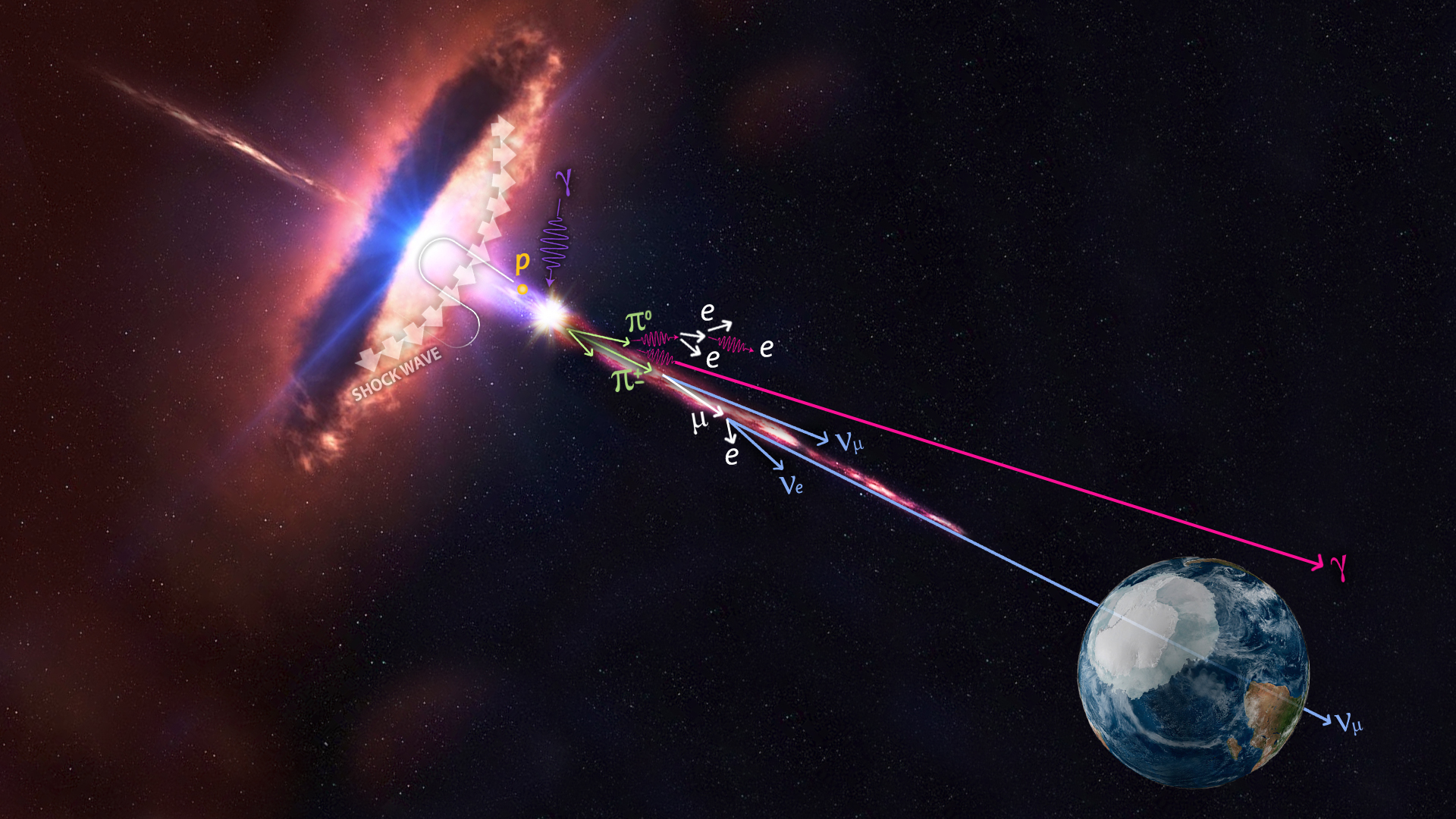GWHEN - Gravitational Waves &
High Energy Neutrinos
Understanding the origin of Cosmic Rays through correlations of GW and HEN
The map displayed below (right) shows the location of the instruments used to detect GW and HEN = the GW interferometers Virgo (in Italy), and LIGO (in the USA), and ANTARES (to be dismantled in 2021) and the KM3NeT telescopes (ORCA and ARCA) under deployment in Europe, and IceCube in operation in Antarctica (USA).

- a GW signal in the
same direction as and correlated in time with a
candidate HEN validates the cosmic origin of the HEN
- this is particularly important as cosmic HEN are
"hidden" by atmospheric neutrinos (with exactly the same
signatures, apart from their energy) ;
- a HEN candidate correlated in space with a GW signal (i.e. located in the 90% confidence region of the GW skymap, which can cover several 100 deg2) can help to discover a possible electromagnetic (EM) counterpart of the GW signal - hence can confirm the astrophysical origin of the signal in case of low significance. Such wide search areas are very long to cover by telescopes, even when mutlple telescopes are observing.
In addition, after the binary neutron star merger GW170817 which revealed the connection between GW and EM emissions, and the blazar TXS0506+056, which is probably the first HEN+EM emitter ever detected, the GW+HEN connection is still to be established. Such a connection would allow to study the intimate link between fusion/collapse /ejection processes, observed through their GW emissions, and ejection/launching of relativistic outflows, revealed through the HEN produced. This is a decisive step towards the understanding of the origin of Cosmic Rays.
Several GWHEN analyses have been performed since the initial proposal in 2008 :
- Pre-discovery era :
GWHEN-1 (published, 2007-08 data), GWHEN-2
(unpublished, 2009-10 data) - searches for
correlations between samples of GW and HEN ;
- Since the discovery
of GW :
- O1 (2015-16) : offline HEN follow-up of individual GW signals ; subthreshold analyses.
- O2 (2016-27) : online/offline HEN follow-up of individual GW signals ; counterparts of catalogued BBH signals ; subthreshold analyses (combined with O3 data)
- O3 (2019-20) : automated online/offline HEN follow-up of GW signals ; stacking of O3a population BBH signals ; subthreshold analyses (combined with O2 data)
- O4 (ongoing, since 2023)
: Online followup with KM3NeT, preparation
of subthreshold analysis.
- Cosmology - the HEN counterpart can help discovering the EM counterpart, and hence the measurement of its redshift. Given existing models, it can also help identifying the galaxy host of the GW signal. In case of a Standard Siren, GWHEN thus facilitates the measurement of the Hubble Constant using GW signals.
- Quantum Gravity - measuring the delay between GW and HEN signals can constrain the Quantum Gravity energy scale.
- Neutrino masses -
again, using core-collapse supernovae, measuring the
delay between the GW burst and the emitted MeV-GeV
neutrinos yields information on the absolute mass
scale of neutrinos.


